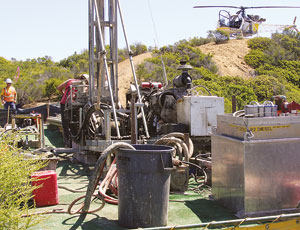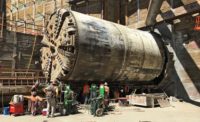Ten-mile hikes, wasp nests and forest fires marked an almost unfeasible feasibility study for a potential world-record road tunnel. Engineering geologists with Kleinfelder Inc., San Diego, are now working on a report, due by fall, for the Orange County Transportation Authority and Riverside County Transportation Commission. It will assess the possibility of building a pair of 50-ft-dia tunnels almost 12 miles long under the Cleveland National Forest in Southern California.

Engineers say tunnel-boring technology is not quite there yet, but might be by the time the agencies find funding and complete any final design for the estimated $8.5-billion project, which would alleviate traffic on overloaded State Route 91. The counties estimate S.R. 91 carries almost 300,000 vehicles a day now, with 425,000 vehicles a day by 2030. A major investment study narrowed several alternatives to the tunnel option.
Funded by a $15.7-million federal grant, the $7-million contract involved exploring 16 sq miles of “some of the most difficult terrain possible,” says Houman Makarechi, Kleinfelder transportation program director. “These depths are not routine for the industry.” In April 2008, Kleinfelder crews began mapping springs and streams and ran tests determining groundwater levels, fault lines and types of earth, while avoiding any tampering with the groundwater. Crews built a helipad and drill rigs on five sites for test core holes as deep as 1,502 ft. Kleinfelder had also drilled holes as deep as 2,500 ft in another contract that will help the Metropolitan Water District determine if a water tunnel can be built parallel to a road tunnel.
“We had to fly everything in by helicopter,” says Paul Guptill, Kleinfelder principal engineering geologist. “We had to hike in and out 12 miles.” Crews came across marijuana fields, cut brush and tried to avoid wasps and snakes. Even worse, Kleinfelder engineering geologist Darrin Hasham notes that his colleagues had to help in a search-and-rescue attempt for a bulldozer operator clearing brush in a nonrelated contract, who was crushed when the machine rolled over and down a slope.
At certain points, the tunnels would be placed beneath up to 900 ft of groundwater, says Guptill. “High-pressure bolted gaskets would be needed,” he says. The tunnels’ varying depths would go as deep as 1,400 ft below the surface, adds Hasham.




Post a comment to this article
Report Abusive Comment